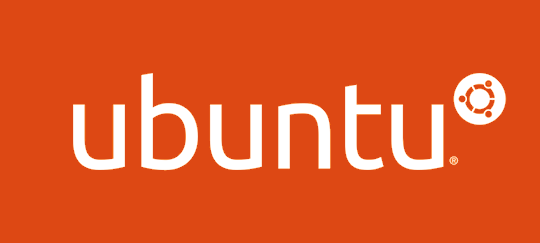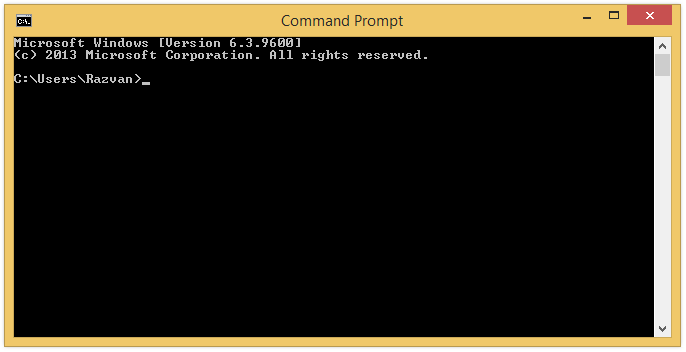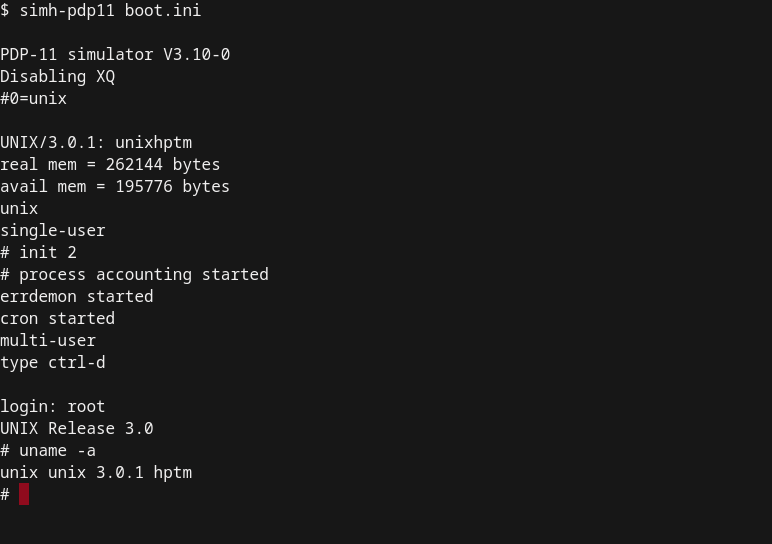🗓️ Week 02
Operating Systems and the ☁️ Cloud
+ some more context into file formats
25 Jan 2024
Operating Systems
Let’s properly go into this topic 🐇
What Operating Systems (OS) do
- A computer can be divided into four parts:
- hardware — provides the basic computing resources for the system
- application programs — define how these resources are used
- operating system — controls the hardware and coordinates its use among the various application programs for the various users
- user — a person or a bot (a computer script) that requests actions from the computer.
For more details, check (Silberschatz, Galvin, and Gagne 2005, chap. 1)
Insight into operating systems
“An operating system is similar to a government. Like a government, it performs no useful function by itself. It simply provides an environment within which other programs can do userful work.”
– (Silberschatz, Galvin, and Gagne 2005, chap. 1)
- If this sounds a bit vague, it is because it is!
- It is actually tricky to specify which programs are part of the OS and which ones are not.
- Let’s try to define what an OS is anyways ⏭️
Definition of OS
- “The OS is the one programming running at all times on the computer.”
- This is usually also called the kernel
- There might be other programs running alongside the OS.
- For example, the
Terminal
- For example, the
- 📱 Mobile computers usually have more “additional” software alongside the kernel, which we call the middleware.
- These applications support multimedia, graphics, internal app databases, etc..
Why bother with this?

Image created with DALL·E via Bing Chat AI bot. Prompt: “a gigantic wooden question mark looms above the big ben, ultra-realistic awesome painting”
- It is improbable you will ever need to interact with the kernel directly.
- But, we often need to install custom software to perform some data analysis
- This software might not come from Apple or Microsoft Store.
- Those are things you have to install “manually.”
Tip
You will inevitably encounter puzzling ⚠️ error messages when programming, no matter how senior or skilled you are.
Understanding how everything is tied together will help you get to the core of the problem more quickly. You will get better at finding the right keywords to search for solutions online.
History of Operating Systems
History
- In the early days of modern computing, when computers were not accessible to everyone, software (applications) typically came with their source code open.
- Open source means you can read precisely which instructions the computer will follow when running.
- As the industry grew, most software companies released only the binaries — a type of file you can only execute, not read as if it was a text.
- This includes Operating Systems! ⏭️

A computer from the 1950s
(Computer History Museum n.d.)
UNIX
- UNIX was the first big Operating System, developed at Bell Labs and AT&T
- It aimed to be simple* and easy to port to any hardware architecture
- But, it required a license
- In the late 1980s and early 1990s, a group of hackers and activists developed free & open source alternatives to UNIX.
Source: Wikimedia Commons - Rwoodsmall
GNU/Linux
- This led to the birth of one of the most influential operating systems: GNU/Linux, or simply Linux.
Android, the most popular OS for phones worldwide, is based on Linux.
- Two people were instrumental to the development of Linux
- Richard Stallman
- Linus Torvalds
GNU stands for “GNU is not Unix”. Computer nerds love a recursive joke.

macOS
- macOS is the Operating System of Apple computers
- It is a hybrid system. It has a free, open-source component called Darwin, but it also includes proprietary, closed-source components.
- iOS, Apple’s mobile operating system, is also based on Darwin
- Darwin is based on BDS UNIX, a derivative of the original UNIX system.
Windows
- Windows has its own history.
- Microsoft and IBM co-developed its predecessor, the OS/2 operating system.
- But then, Microsoft took on its own path and developed its own versions of the OS: Windows NT, Windows 95, Windows 98, Windows 2000, Windows XP, Windows 7, Windows Vista*, etc.
- Windows popularity can be traced to the success of the Office suite
See (Silberschatz, Galvin, and Gagne 2005, Appendix B) for more on Windows.
Virtualization
- Virtualization is a technology that creates the illusion that you are running a separate private computer.
- You decide how much of your CPU/RAM/Hard drive to share with the virtual machine
Emulators & Virtual Machines
- You can install an emulator to run Windows inside Mac (and vice-versa)
- Provided you own a licence to install the other OS
- You can share files to and from the virtual machine inside the emulator, but the internal machine will “think” it is a separate computer.
The remote machine you are using this week is a virtual machine!
- Example of commercial virtualization software

Windows Subsystem for Linux (WSL)
- In an attempt to entice Linux users (especially developers), Microsoft added a Linux emulator to Windows named “Windows Subsystem for Linux”
- You install your preferred Linux distribution
- Ubuntu is one of the most popular

The Terminal
Recap 🕰️
- A terminal, or command prompt or command line is a screen or a window that lets you access the Operating System’s input and output.
- There are no graphics (images/video) in the terminal, only text.

Image source: Gortu at English Wikipedia
Shell
Recap 🕰️
- Typically, the terminal runs a program (app) called the shell.
- The shell awaits, interprets, processes, executes, and responds to commands typed in by the user.
- There are many shells, each has its own features.
- Popular Linux shells:
shor the Bourne shell: developed at AT&T labs in the 70s by a guy named Stephen Bourne.bashor the Bourne again shell: very popular, compatible withshshell scripts.kshor the Korn shell: provides enhancements over theshand it is also compatible withbash.cshandtcsh: shells that have a syntax similar to the programming languageC.
Want to become a shell scripting pro? Check out (Ebrahim and Mallett 2018).
Windows CMD vs PowerShell
Recap 🕰️
- Windows has its own thing.
- For historical reasons, there are two main terminals/shells on Windows these days:
CMD
Powershell


Original product: Microsoft. This animation: Useerup, CC BY-SA 3.0, via Wikimedia Commons.
The ☁️ Cloud
What does all of that have to do with the cloud?
Definition of Cloud Computing
From the major cloud providers:
Amazon Web Services (AWS)

Microsoft Azure

Google Cloud Platform (GCP)

Definition of Cloud Computing
In sum:
- A network of computers stored somewhere else (not in your organisation).
- You can access them directly via a terminal app.
- Or you can use apps installed on these computers (data storage, on-demand computing, etc.).
Considerations
- An organisation does not need to build and maintain an infrastructure of computer servers
- Maintain is truly a keyword here
- You need a specialised workforce to mitigate problems and keep services up
- 🤔 Think about it:
- what if a CPU fails?
- what if a hard drive becomes corrupted?
- how often should you back up data? where should you keep it?
- Instead, CPU processing, data storage and access are delegated to a set of computers somewhere else
- Users, and organisations, only pay for what they use.

☕️ Time for a break
What is in the cloud?
Google Cloud services

What about AWS?

Azure services

Cloud computing models
We can think of these services in the following categories:
- Software as a Service (SaaS)
- Infrastructure as a Service (IaaS)
- Platform as a Service (PaaS)
Let’s go through each one of those.
Software as a Service (SaaS)
- Software that you interact with but runs elsewhere, not in your machine.
- To name a few examples:
File storage:
- Dropbox
- Google Drive
- One Drive
- Sharepoint
Web apps:
- Google Suite
- Google Docs
- Outlook Web
- Office 365
Infrastructure as a Service (IaaS)
- Direct access to virtual machines and data storage.
- Instead of buying computers for yourself/your organisation, you rent them.
- You do not pay, or you pay very little when your cloud machines are off.
- Use cases: website hosting, Big Data analysis, run simulations.
- Complete flexibility: you install and run whatever you want on those computers.
- Terms & Conditions apply, obviously.

For example, cryptomining is against the T&Cs. (Source)
IaaS | Examples
- AWS
- EC2 (Amazon Elastic Compute Cloud)*
- S3 (Amazon Simple Storage Service)
- Google Cloud
- Compute
- Storage
- Azure
- Compute
- Storage
- Windows Server
- Linux on Azure

* You might not even notice, but we will use an EC2 instance in our labs this week.
IaaS | Examples
- AWS
- EC2 \(\rightarrow\) Virtual Machine
- S3
- Google Cloud
- Compute \(\rightarrow\) Virtual Machine
- Storage
- Azure
- Compute \(\rightarrow\) Virtual Machine
- Storage
- Windows Server
- Linux on Azure

Before I do a demonstration…
I need to tell you a tiny bit about security and cryptography, as these things are important when connecting to a remote machine.
SSH
- To ensure your connection to the cloud is secure, we often need to perform authentication.
- SSH, which stands for Secure SHell Protocol is a bit of software that comes pre-installed in most UNIX-like systems (macOS and Linux).
- SSH takes care of authenticating your connection to the server, ensuring the security and privacy of that connection.
SSH keys
- Central to SSH is the idea of public and private keys
- You might need to use SSH keys when connecting to:
- a virtual machine in another computer (or in the cloud)
- an API to download data
- an online service like Github, a platform for sharing code (mostly open source)
We saved you the burden of using keys this week.
Instead, we configured our cloud’s SSH server to accept passwords.
However, SSH keys will make an important comeback next week when we start playing with Git!
Live Demo (Google Cloud)
References
![]()
LSE DS105W (2023/24) – Week 01 | archive


